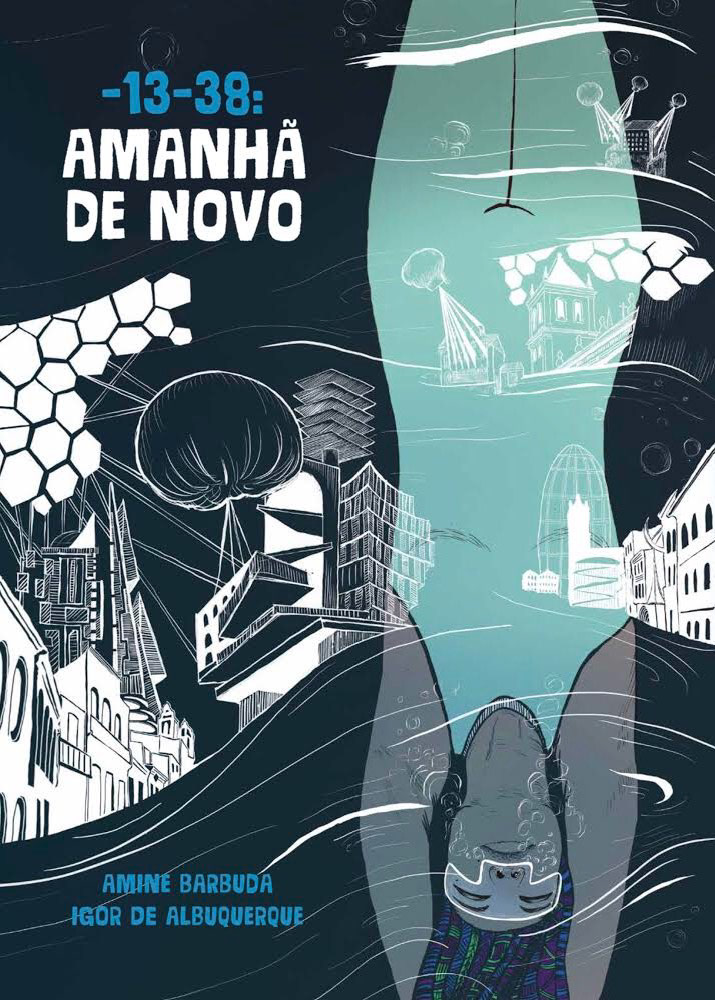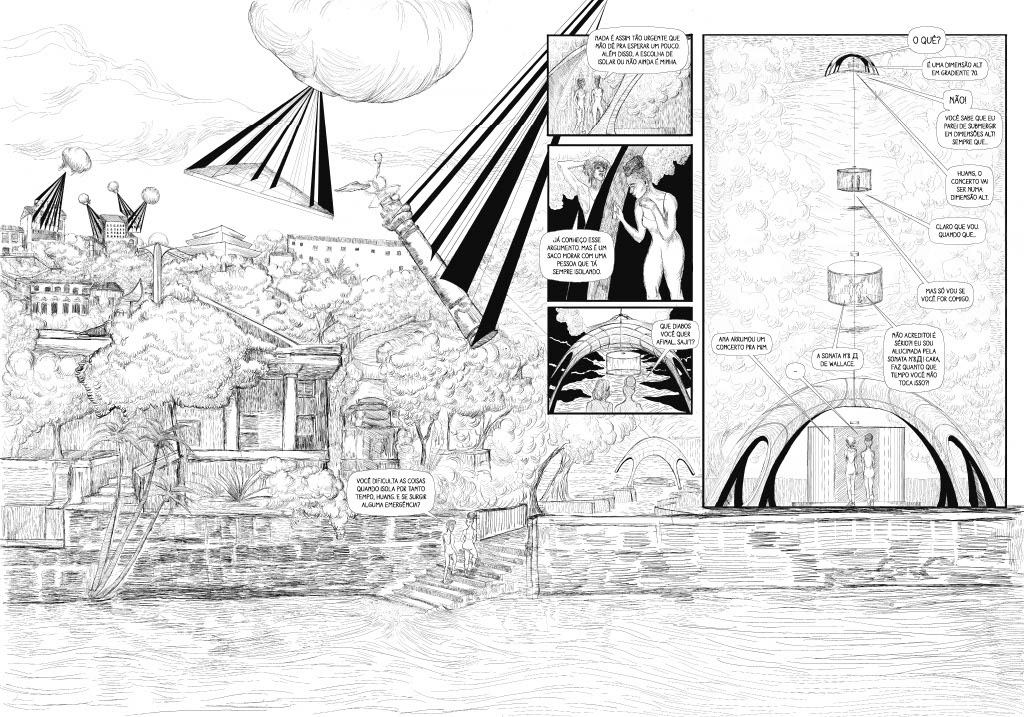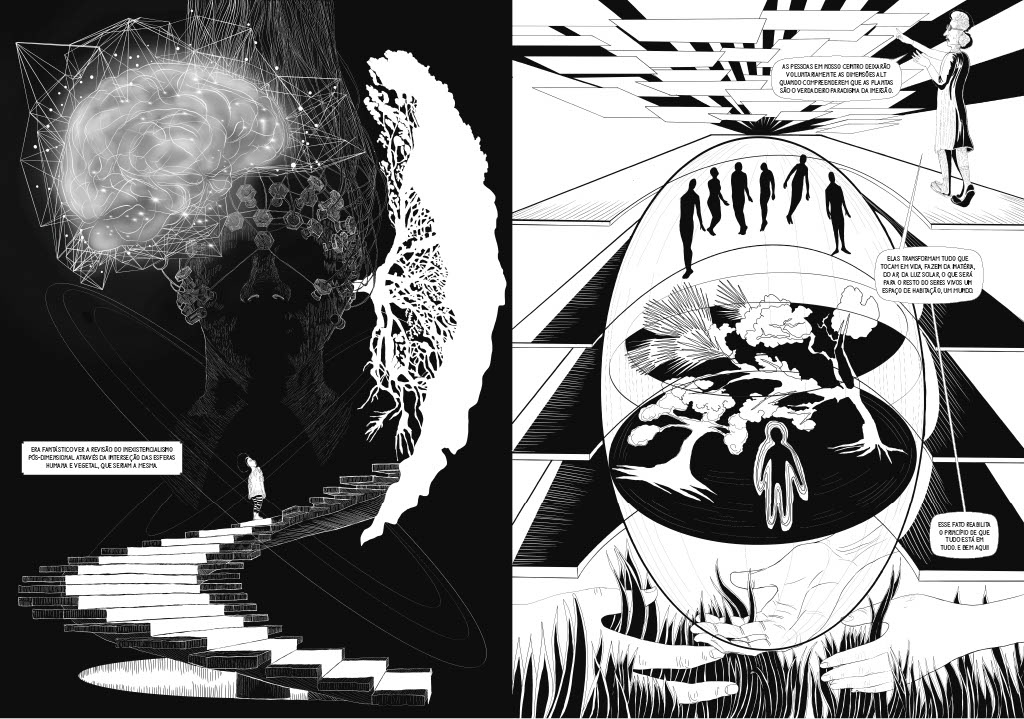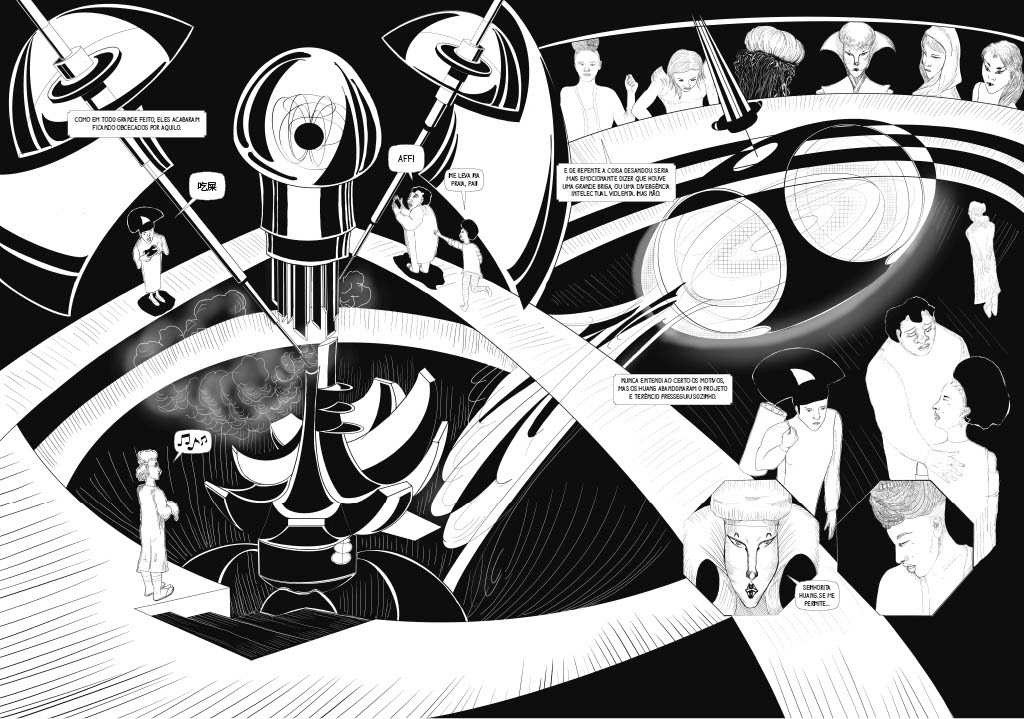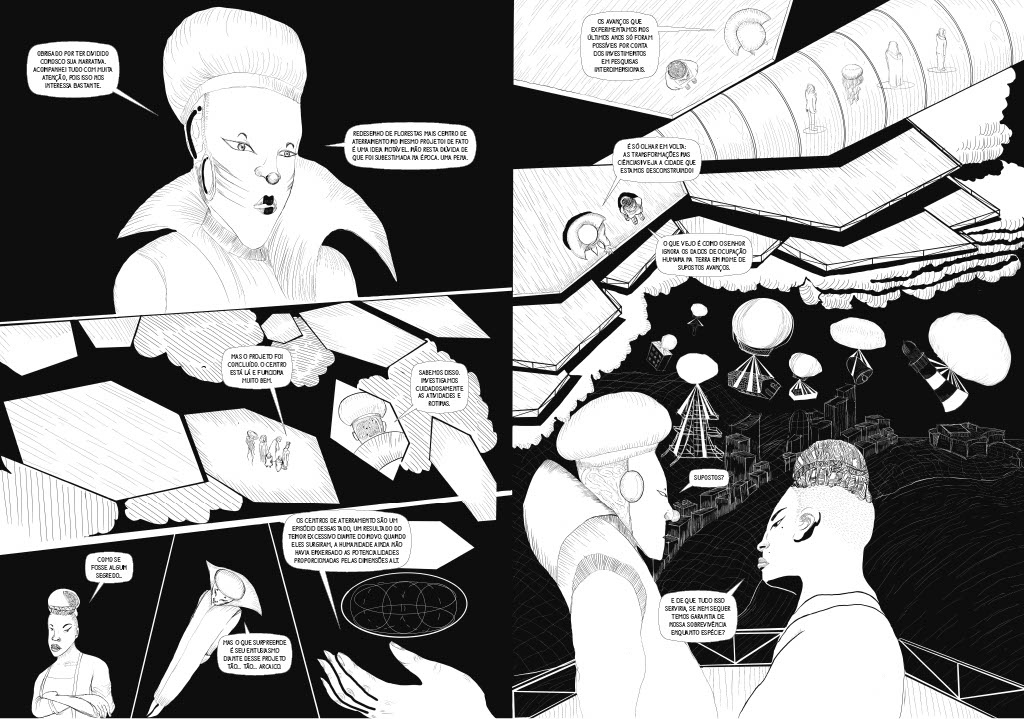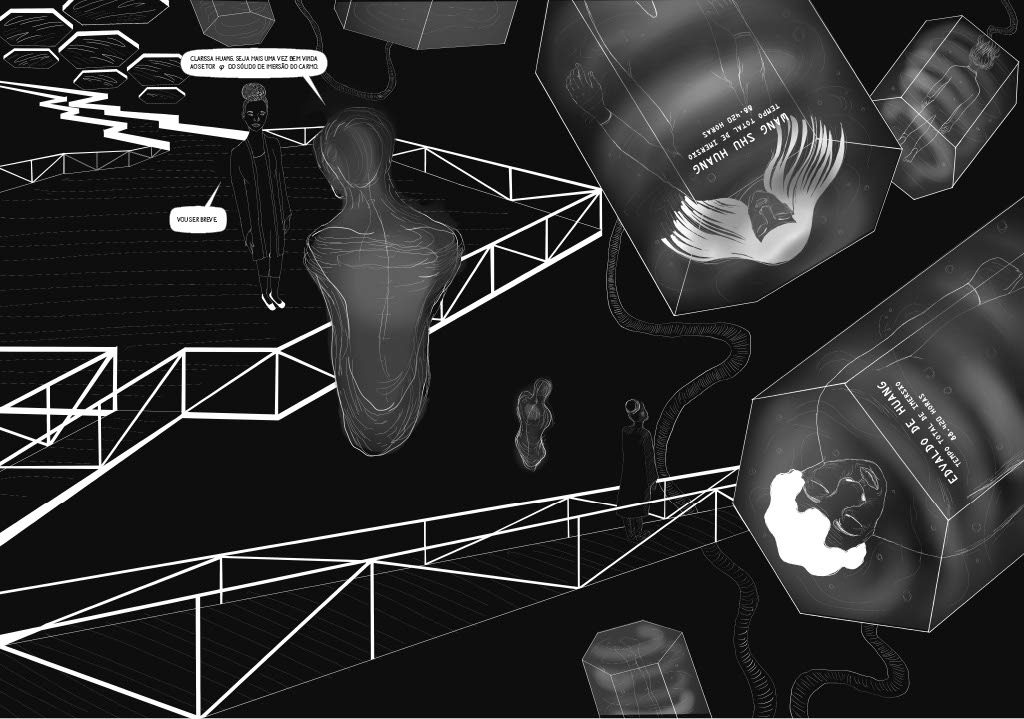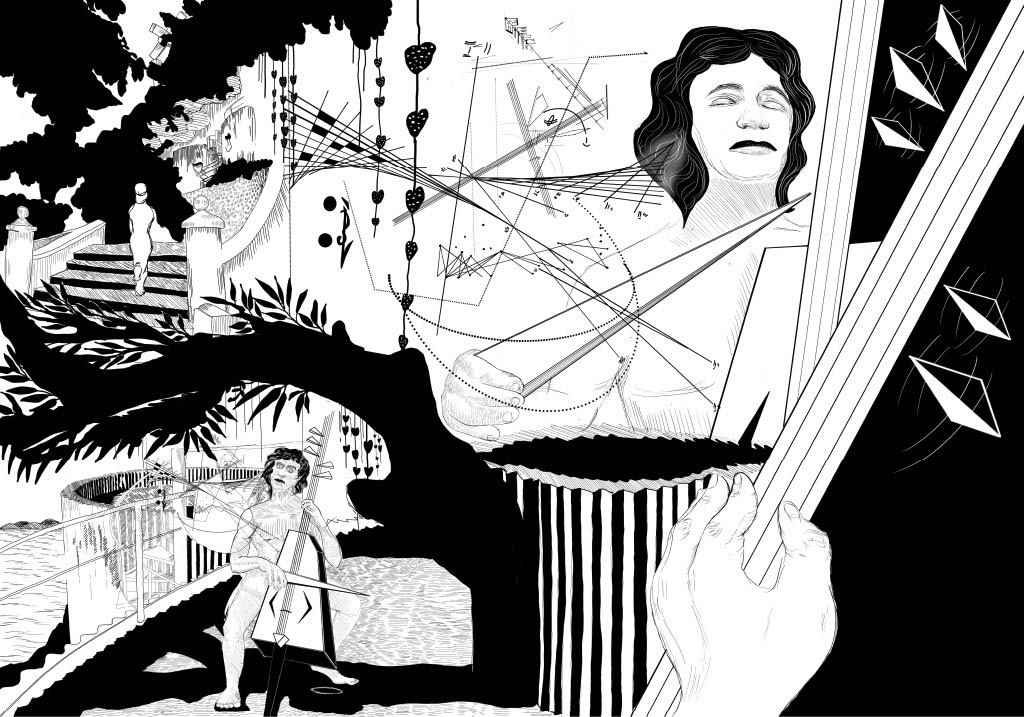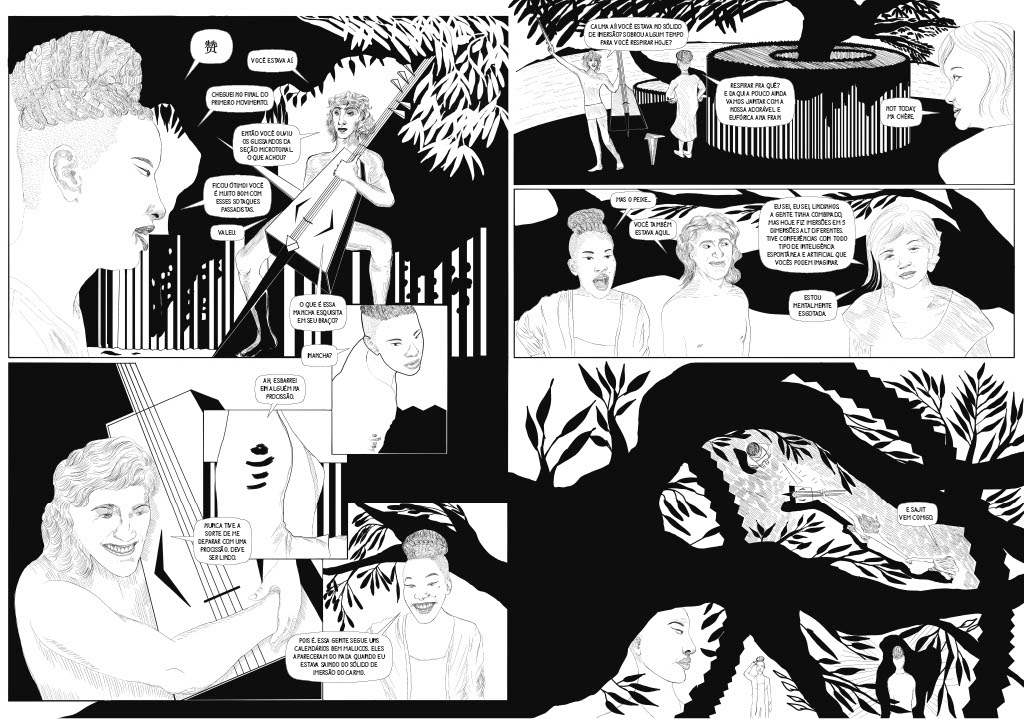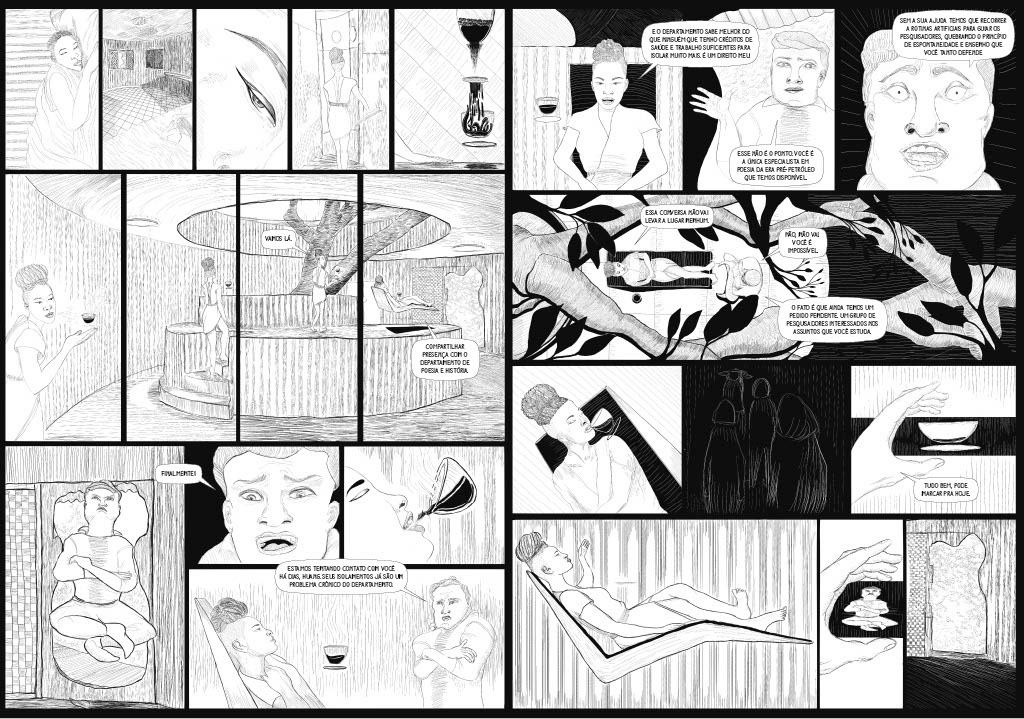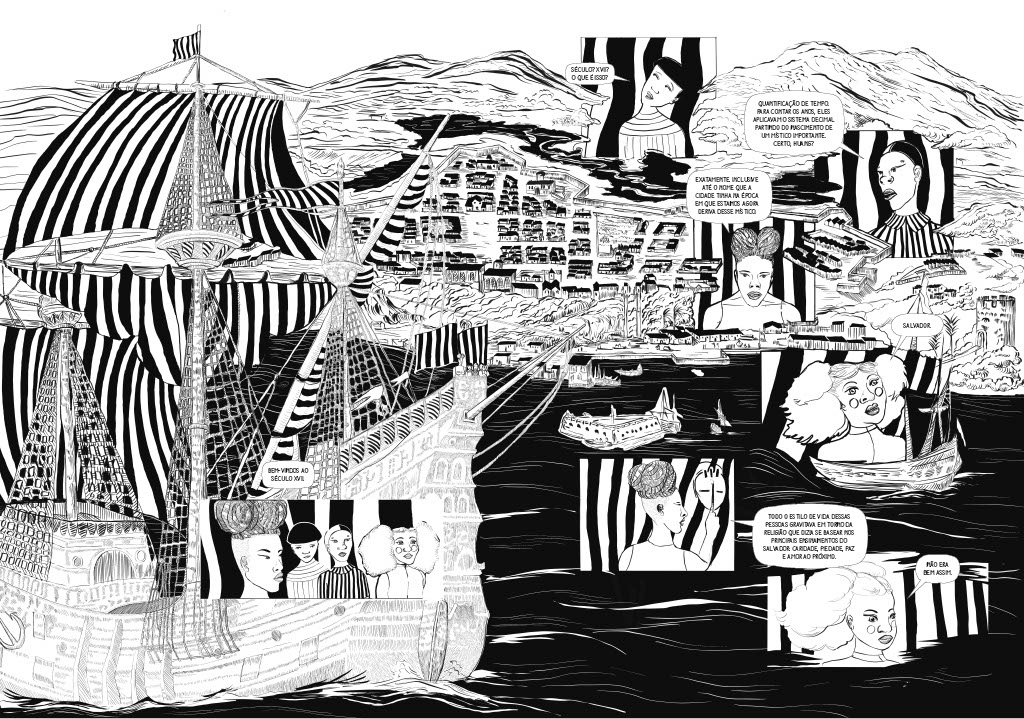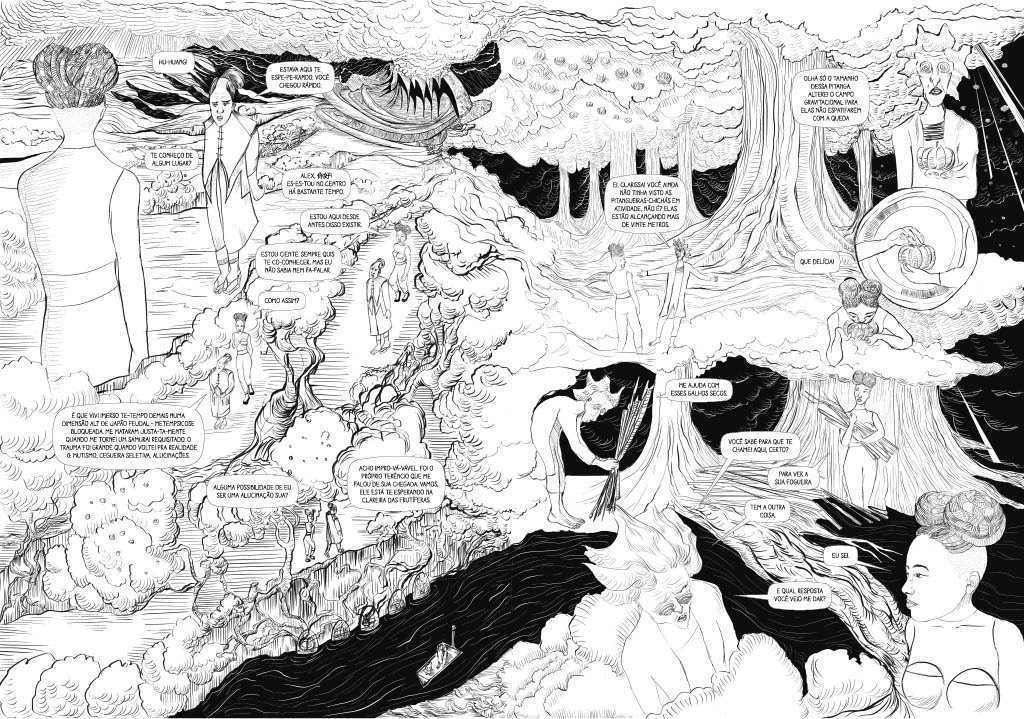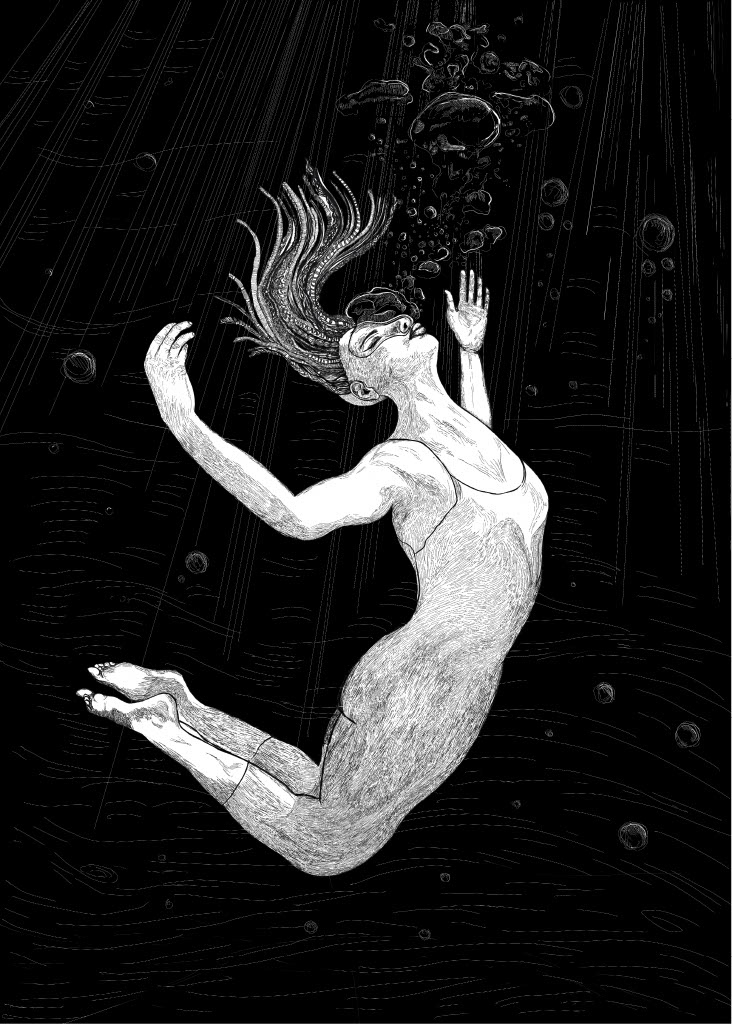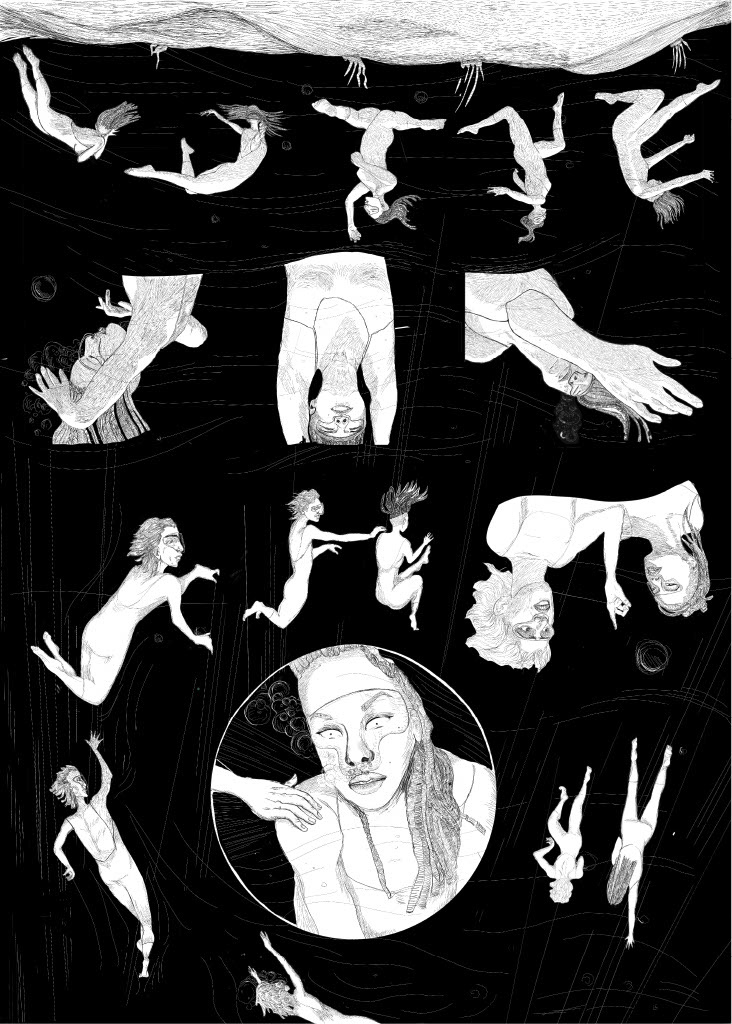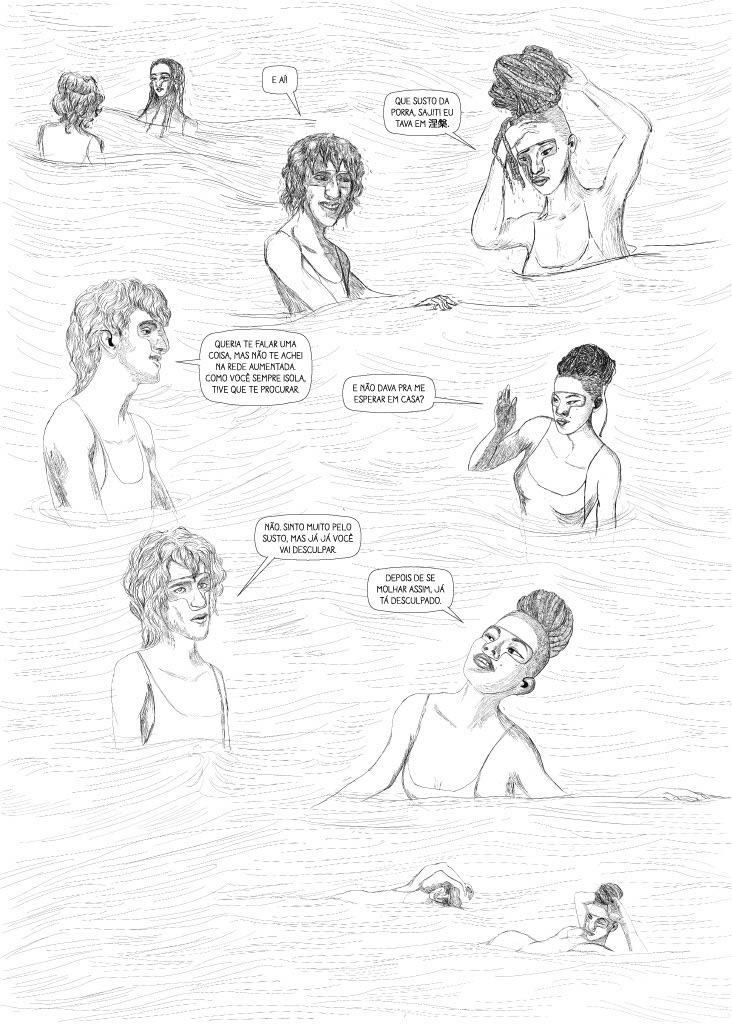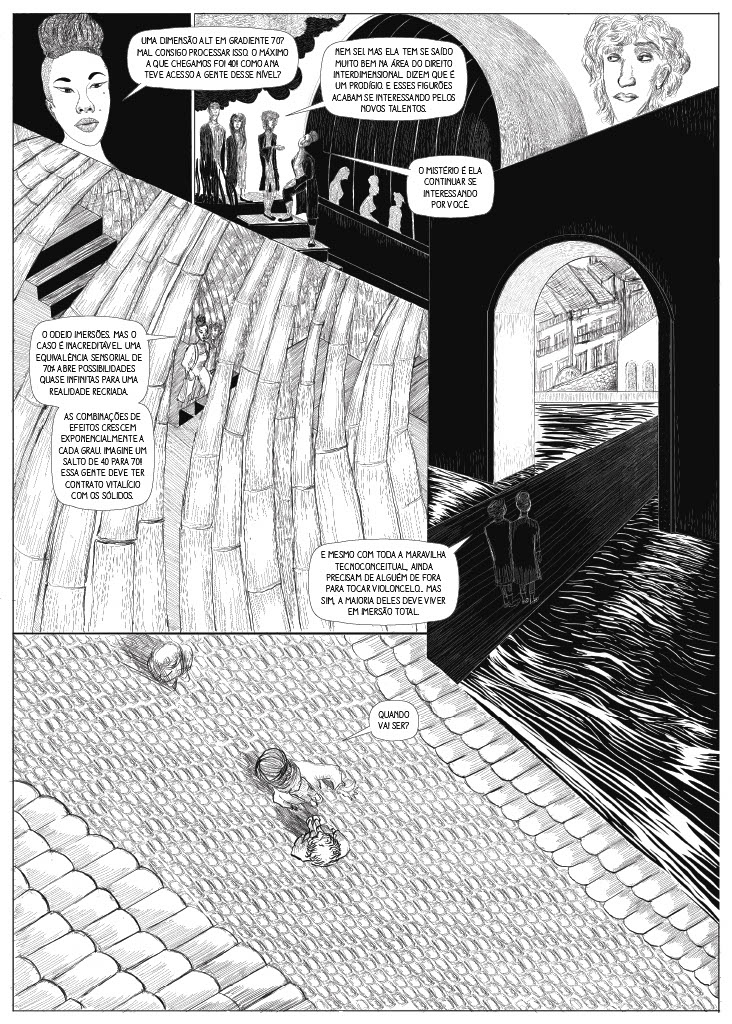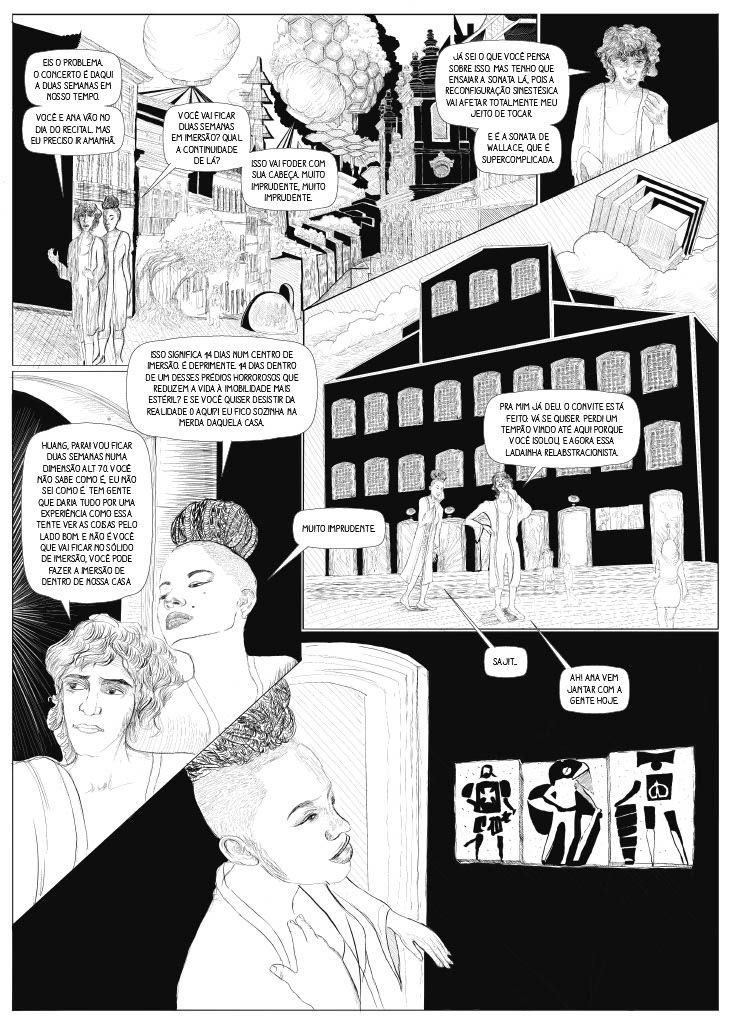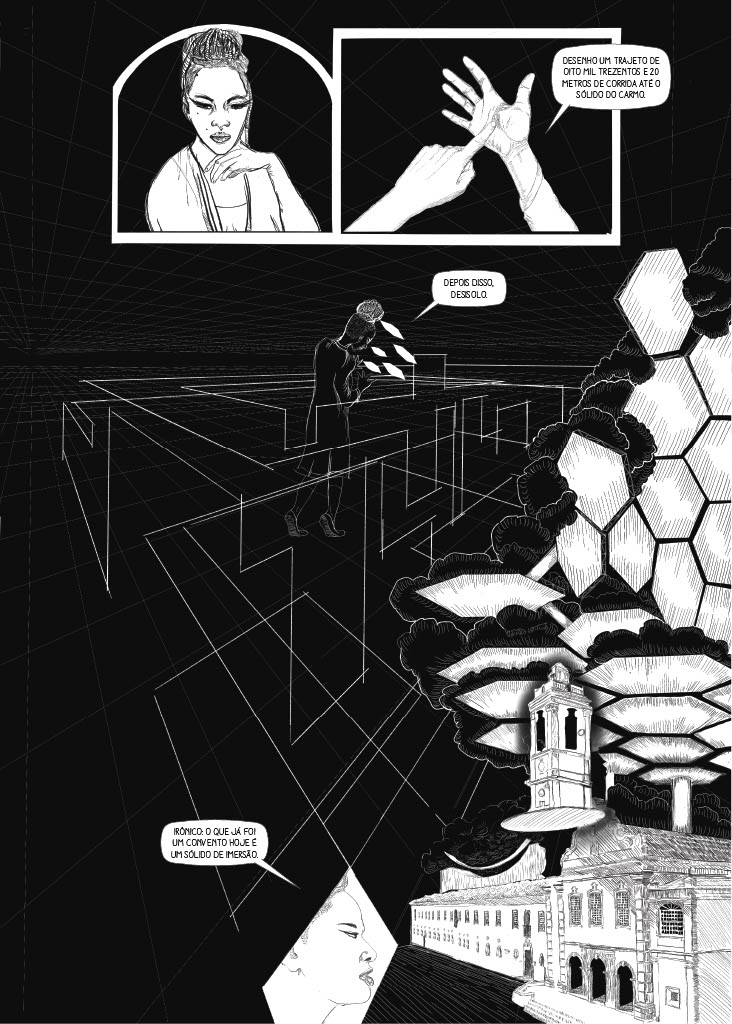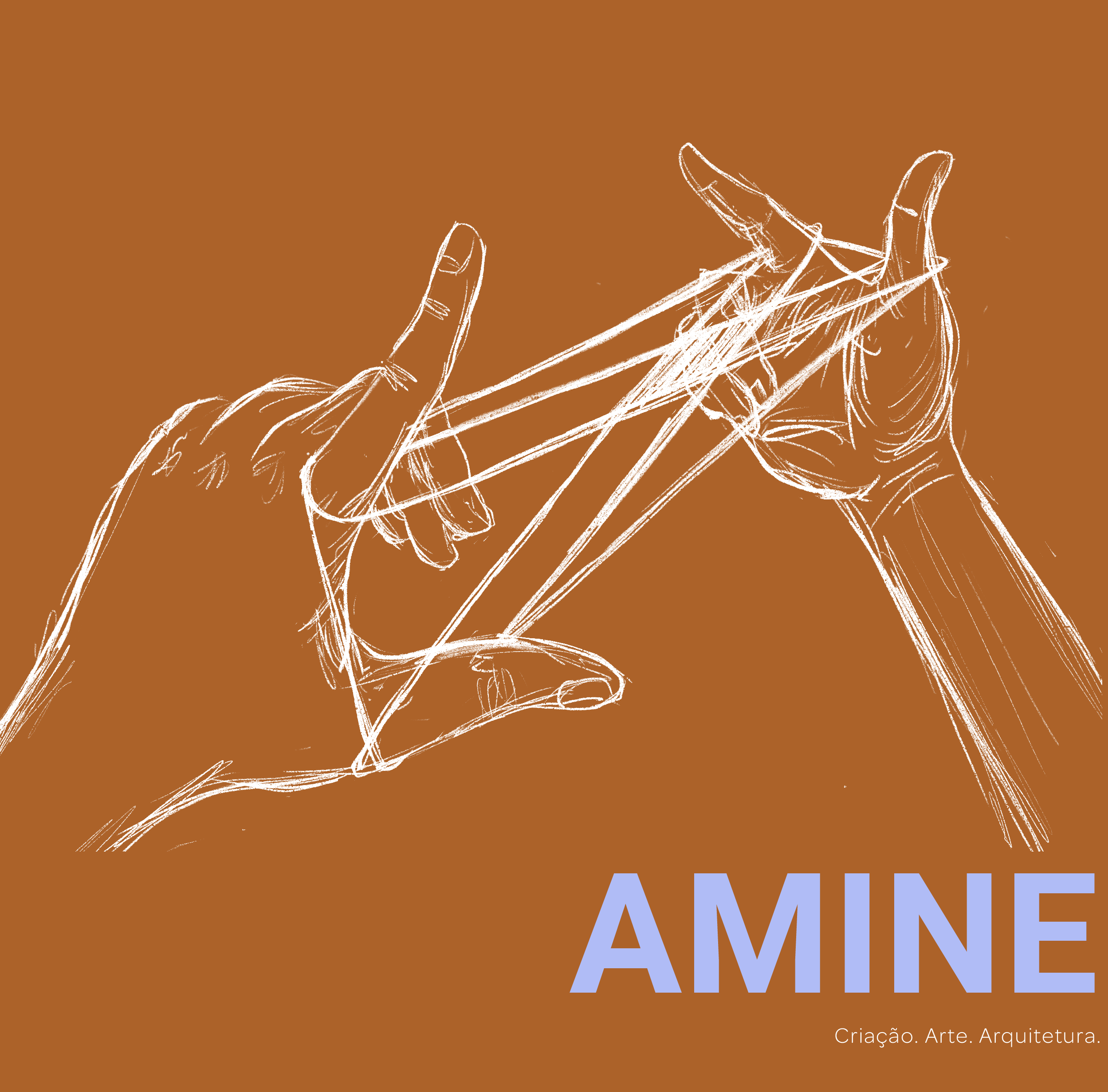Com roteiro de Igor de Albuquerque e ilustrações de Amine Barbuda, -13, -38: amanhã de novo foi contemplada pelo edital Gregórios, da Fundação Gregório de Mattos, Prefeitura de Salvador. Dimensões alternativas, impasses tecnofilosóficos, redesenho do real – uma ficção científica na cidade de Salvador é o que move a narrativa de -13, -38: amanhã de novo. "-13, -38º: amanhã de novo" se desenvolve em torno do cotidiano de Clarissa Huang, uma mulher de ascendência chinesa e afro-brasileira, que vive em Salvador no futuro. Nas 24 horas em que a narrativa se passa, o leitor acompanha um dia comum da vida dessa personagem que lida com temas como o impacto das tecnologias no futuro da humanidade, o impasse filosófico das realidades virtuais e as reconfigurações da história e das artes - Huang trabalha com a poesia do século XVII de Gregório de Mattos.
Link para reportagem sobre o livroTV BRASIL:
Written by Igor de Albuquerque and illustrated by Amine Barbuda, "-13, -38º: tomorrow again" was awarded by the Gregório edict, from the Gregório de Mattos Foundation, from Salvador City Hall. Alternative dimensions, technophilosophical impasses, redesign of the real - a science fiction in the city of Salvador is what drives the narrative of "-13, -38º: tomorrow again". The narrative takes place in Clarrisa Huang's 24 hours daily life, who deals with topics such as the impact of technologies on the future of humanity, the philosophical impasse of virtual realities and the reconfigurations of history and the arts. Huang works with 17th century poetry by Gregório de Mattos. Another central issue of the comic is the discussion about the future of urban spaces; the city - which is no longer called Salvador and is referred to as -13, - 38 (geographical coordinates) - appears as one of the main starting points of the comic's verbal and visual reflections.
